Remarriage Rate 2021
Family Profile No. 19, 2023
Author: Krista K. Westrick-Payne
In 2021, the overall U.S. marriage rate remained low at 28.1 marriages per 1,000 unmarried females (Juteau, 2022) as did the first marriage rate at 40.0 per 1,000 never married females (Westrick-Payne, 2023). But approximately half of all marriages in the U.S. end in divorce (Mayol-García, Gurrentz, & Kreider, 2021) and many experience widowhood (Carlson & Schweizer, 2020). Although most divorced individuals repartner, data since the 1980s indicate remarriage rates have also been declining (Sweeney, 2010; Payne, 2018). This profile provides separate estimates for both males and females using U.S Census data from the American Community Survey provided by IPUMS-USA to estimate the remarriage rate (defined as the number of marriages per 1,000 previously married individuals) among males and females aged 18 years and older. This Family Profile is an update to previous profiles on the remarriage rate (FP-15-08; FP-18-16; FP-19-17; & FP-21-18).
Trends in the Remarriage Rate for Males and Females
- The remarriage rate has decreased overall since 2008 from 48.9 marriages per 1,000 previously married males to 32.0 marriages per 1,000 previously married males in 2021. Among females, it decreased from 25.2 in 2008 to 17.2 in 2021.
- An estimated 515,783 males and 488,707 females experienced a remarriage in 2021.
Figure 1. Remarriage Rate for Males and Females, 2008–2021
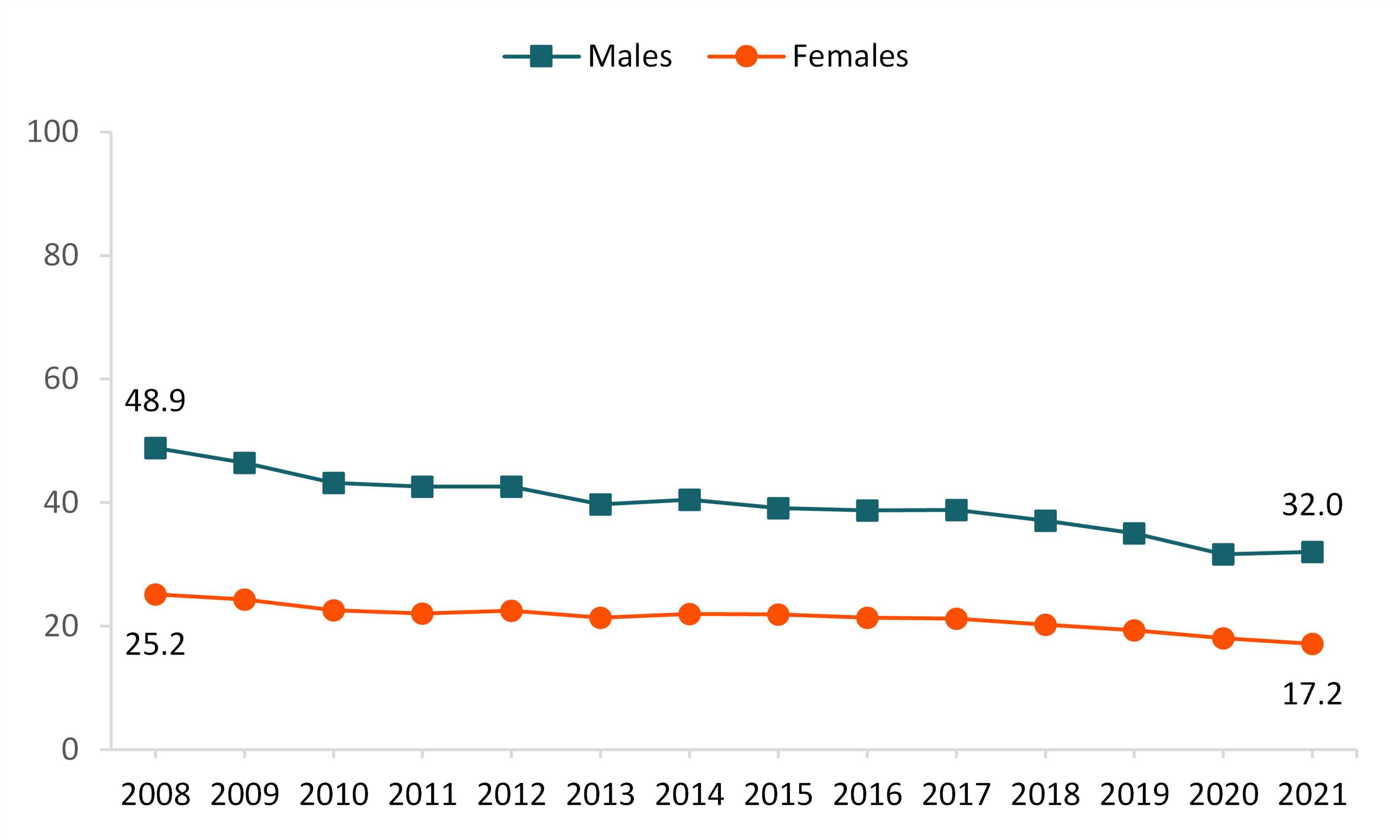
Remarriage Rate by Age for Males and Females
- Remarriage rates decreased with age.
- The highest remarriage rates were among those aged 18 to 29 with 86.6 per 1,000 previously married males and 83.8 per 1,000 previously married females experiencing a remarriage in 2021.
- The lowest remarriage rates were observed among those aged 75 and older (6.0 males and 0.9 females per 1,000 previously married). An estimated 15,271 males and 6,989 females aged 75 and older in the United States remarried in 2021.
- As age increased the percentage difference in the remarriage rate between males and females also increased.
Figure 2. Remarriage Rate for Males and Females 18 and Older by Age, 2021
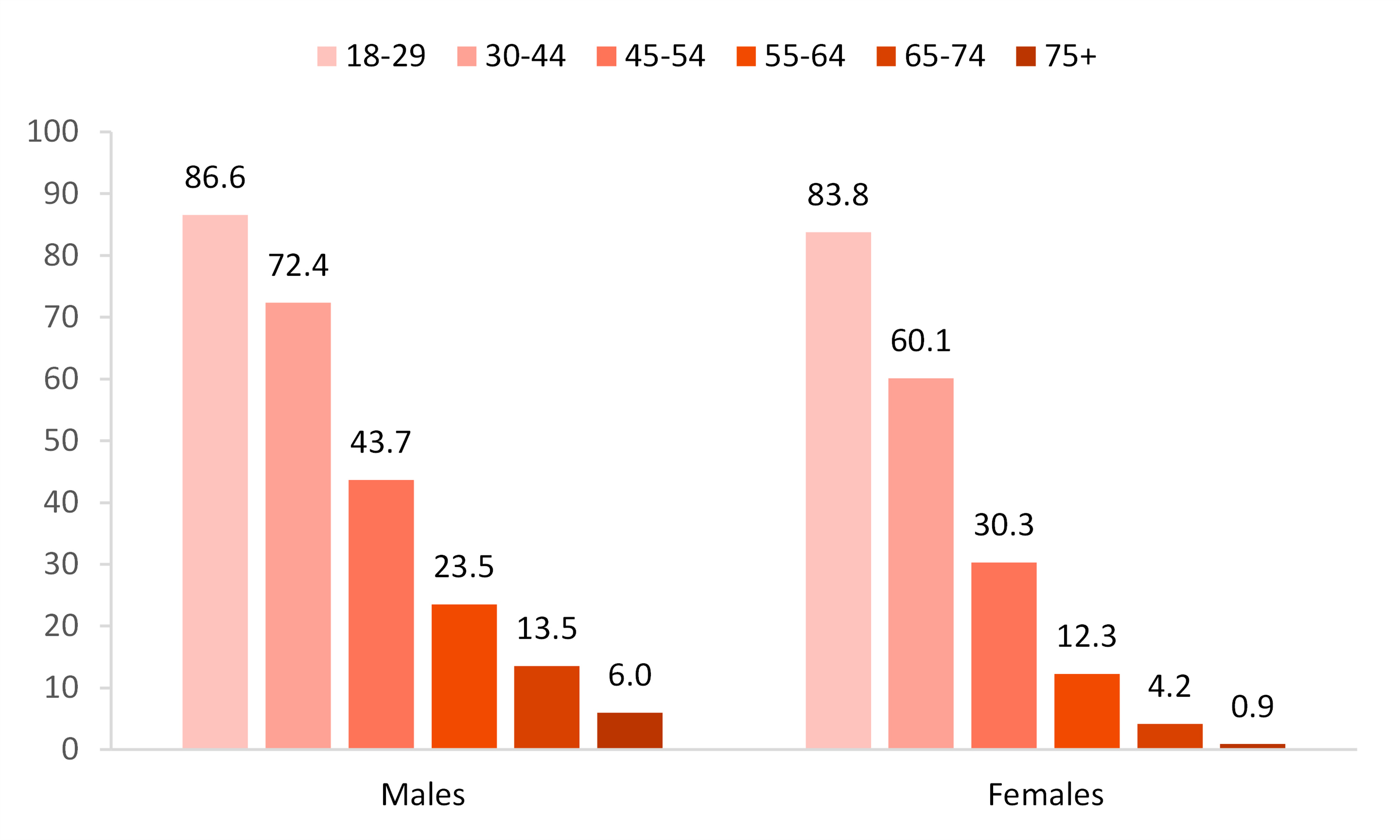
Remarriage Rate by Race, Ethnicity, and Nativity for Males and Females
- In 2021, Hispanic males and racial/ethnic “Other” females experienced the highest remarriage rates (40.7 and 23.1, respectively).
- Racial/ethnic “Other” males and Black females had the lowest remarriage rates (22.0 and 13.7, respectively).
- Although most males had higher remarriage rates than their same racial/ethnic male counterparts, this was not the case among racial/ethnic “Others” for whom the remarriage rate of females exceeded that of males.
- Foreign-born males had higher remarriage rates than their native-born counterparts (see Figure 4). This was the case for each racial/ethnic group examined, except among “Other” males (not shown).
- Among females, there was little difference in remarriage rates between the native-born and foreign-born (17.1 and 17.3, respectively). However, when observed separately by race/ethnicity the native-born had higher remarriage rates among Whites, Asians, and Hispanics and the foreign-born had higher remarriage rates among Blacks, Others, and those of 2 or more races (not shown).
Figure 3. Remarriage Rate for Males and Females 18 and Older by Race and Ethnicity, 2021
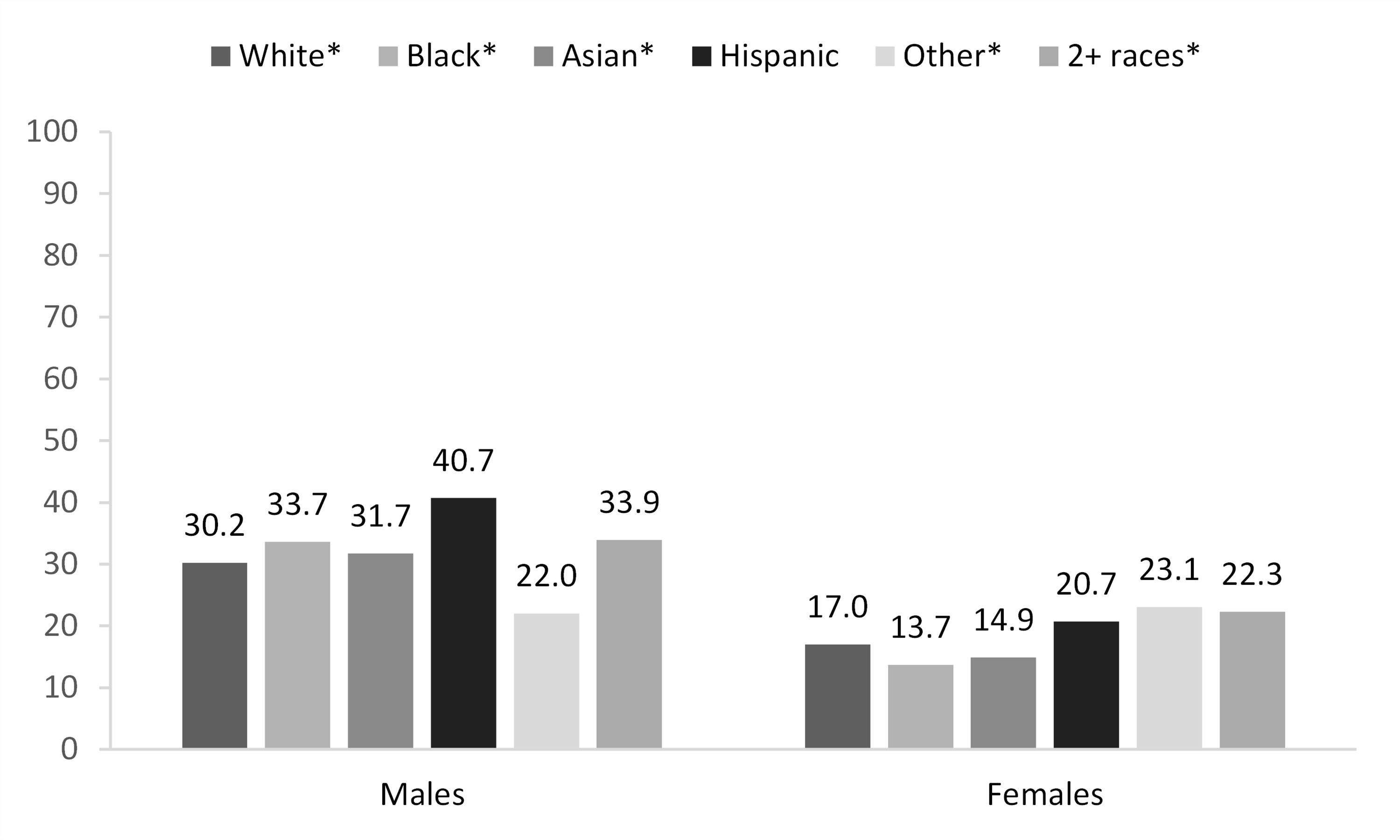
Figure 4. Remarriage Rate for Males and Females 18 and Older by Nativity, 2021
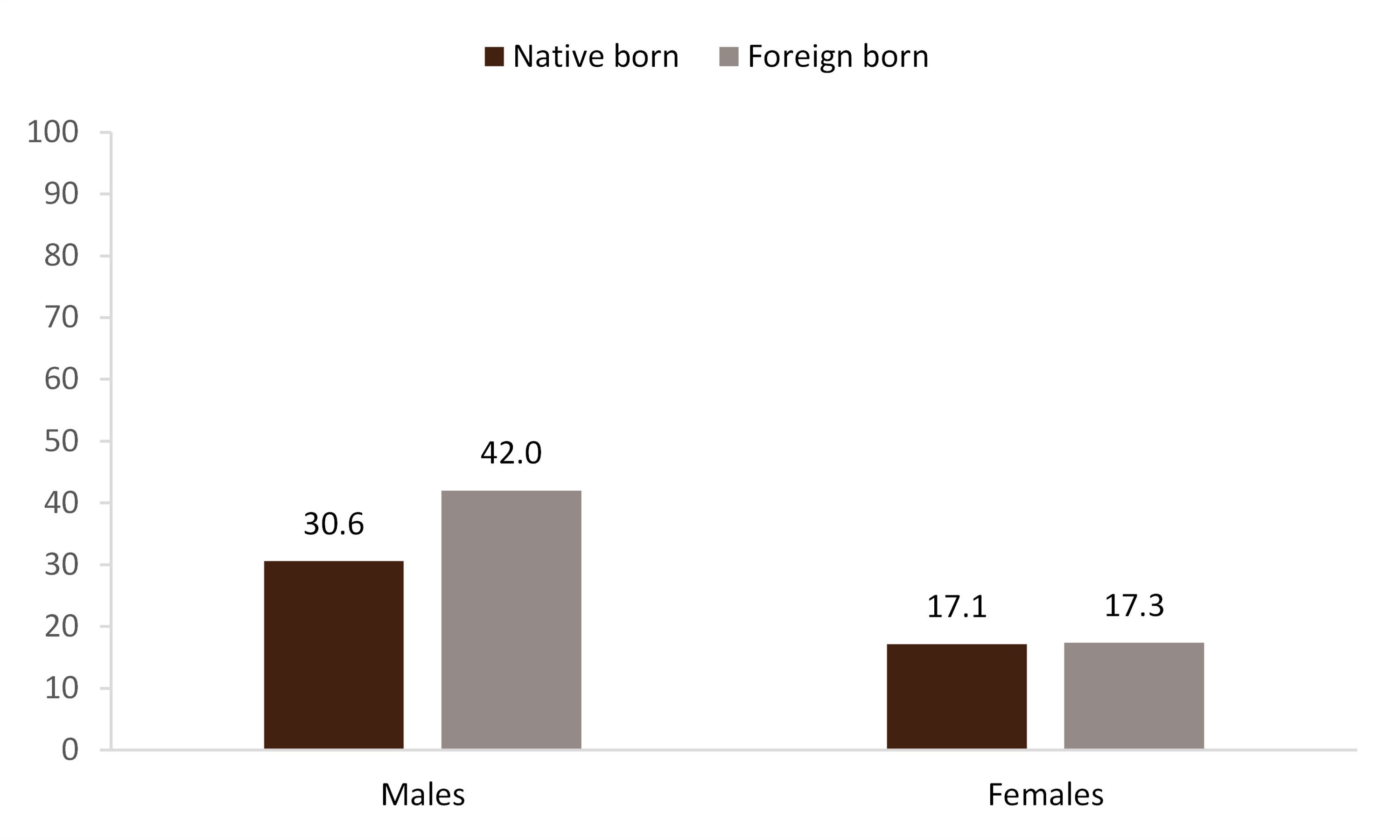
Remarriage Rate by Educational Attainment for Males and Females
- Patterns of remarriage by educational attainment were very similar among males and females in 2021, albeit with higher rates for males.
- The lowest remarriage rates were among those with the lowest educational attainment regardless of sex; 23.7 per 1,000 previously married males with less than a H.S. level of education and 11.0 per 1,000 previously married females with less than a H.S. level of education.
- Remarriage rates among those with an associate degree or more were very similar. Among males the remarriage rate was 37 to 38 per 1,000 previously married. Among females it was 21 to 22 per 1,000 previously married.
Figure 5. Remarriage Rate for Males and Females 18 and Older by Educational Attainment, 2021
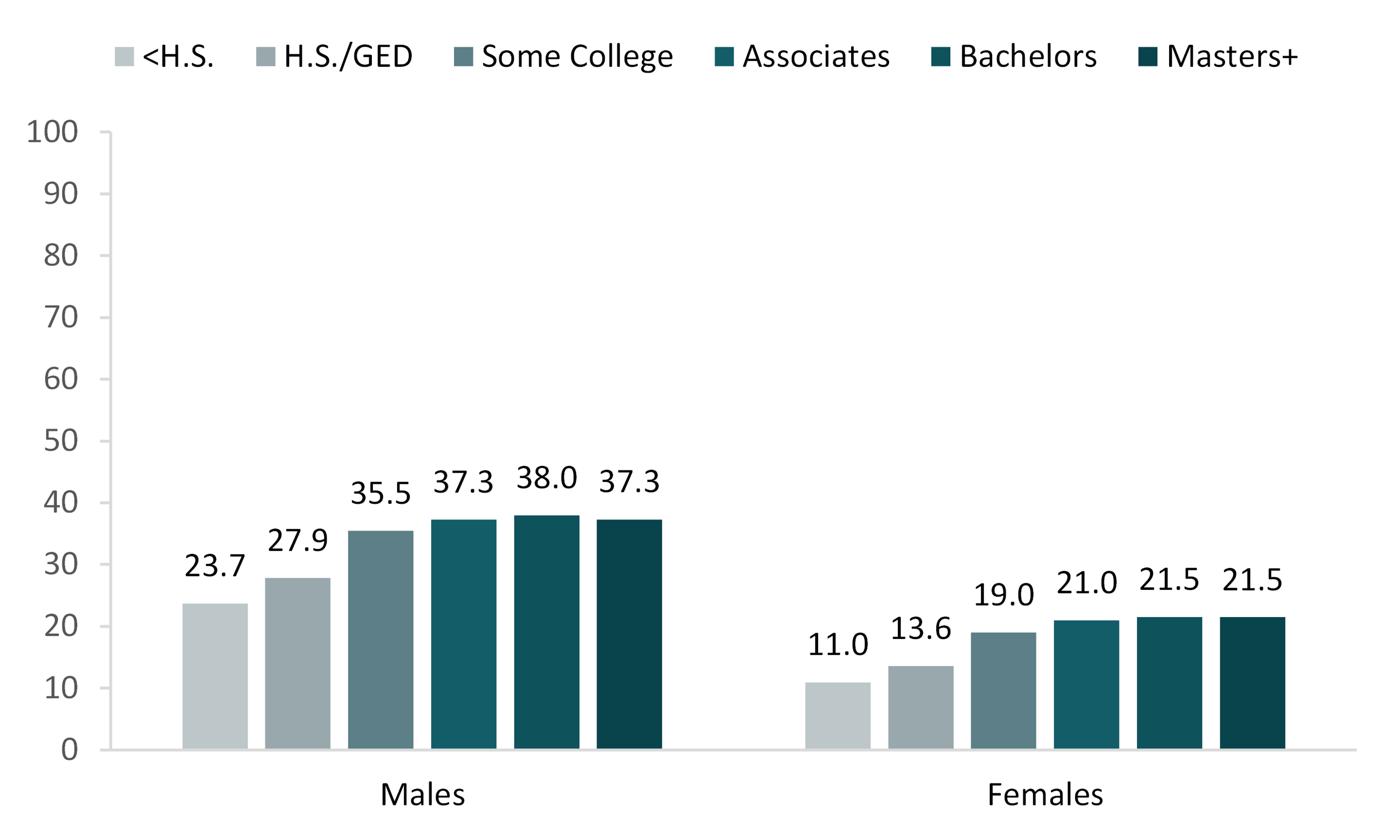
Data Source:
Ruggles, S., Flood, S., Sobek, M., Brockman D., Cooper, G., Richards, S., Schouweiler, M. (2023). IPUMS USA: Version 13.0 [dataset]. Minneapolis, MN: IPUMS. https://doi.org/10.18128/D010.V12.0
References:
Carlson, L. & Schweizer, V. J. (2020). Widowhood: Decades of change, 1940-2018. Family Profiles, FP-20-23. Bowling Green, OH: National Center for Family & Marriage Research. https://doi.org/10.25035/ncfmr/fp-20-23
Juteau, G. (2022). Marriage rate in the U.S.: Geographic variation, 2021. Family Profiles, FP-22-25. Bowling Green, OH: National Center for Family & Marriage Research. https://doi.org/10.25035/ncfmr/fp-22-25
Payne, K. K. (2015). Remarriage rate: Geographic variation, 2013. Family Profiles, FP-15-08. Bowling Green, OH: National Center for Family & Marriage Research. https://www.bgsu.edu/ncfmr/resources/data/family-profiles/payne-remarriage-rate-fp-15-08.html
Payne, K. K. (2018). Change in the U.S. remarriage rate, 2008 & 2016. Family Profiles, FP-18-16. Bowling Green, OH: National Center for Family & Marriage Research. https://doi.org/10.25035/ncfmr/fp-18-16
Reynolds, L. (2021). The U.S. remarriage rate, 2019: Trends and geographic variation by gender. Family Profiles, FP-21-18. Bowling Green, OH: National Center for Family & Marriage Research. https://doi.org/10.25035/ncfmr/fp-21-18
Schweizer, V. (2019). The retreat from remarriage, 1950-2017. Family Profiles, FP-19-17. Bowling Green, OH: National Center for Family & Marriage Research. https://doi.org/10.25035/ncfmr/fp-19-17
Sweeney, M. (2010). Remarriage and stepfamilies: Strategic sites for family scholarship in the 21st century. Journal of Marriage & Family 72(3), 667-684. DOI: 10.1111/j.1741-3737.2010.00724.x
Mayol-García, Y. H., Gurrentz, B., & Kreider, R. M. (2021). “Number, Timing, and Duration of Marriages and Divorces: 2016,” Current Population Reports, P70–167, U.S. Census Bureau, Washington, DC. https://www.census.gov/content/dam/Census/library/publications/2021/demo/p70-167.pdf
Suggested Citation:
Westrick-Payne, K. K. (2023). Remarriage rate, 2021. Family Profiles, FP-23-19. National Center for Family & Marriage Research. https://doi.org/10.25035/ncfmr/fp-23-19
Updated: 11/12/2025 10:13AM


